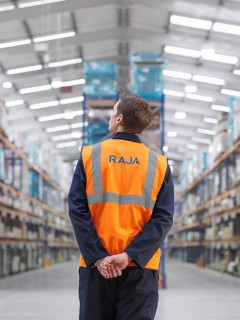As a logistics and transport manager, perhaps the price of transporting your goods has always seemed unclear to you. No matter how hard you try to understand your invoices, your transporters seem to apply rather hermetic calculation methods.You are not alone: most companies “suffer” these rates without really understanding them. Discover in this article, written with the help of ColisConsult, a firm specialising in the purchase of smart transport, how the price of transporting your goods is calculated, in order to better understand your transporters’ quotes and invoices. As a bonus, also take the time to consult 6 tips for shipping your parcels more cheaply, without cutting back on the quality of your shipments.
How is the price of transporting goods calculated?
As you might expect, the calculation of the price of transporting your goods varies according to a mode of transport
- On the one hand, there isthe operational logic of operating costs experienced by carriers, which leads them to calculate their final transport rates after applying a margin.
- On theother hand, some players in the courier world take a different approach with a “commercial” pricing logic that consists of pricing according to customers (called, in the transport world, “shippers”). These customers are necessarily looking for the best transport rates for their shipments of containers, pallets, parcels or even bulk freight.

Comment donc comprendre comment sont calculés vos frais d’acheminement de colis ?
Les coûts de transport dans le monde du fret maritime et fret aérien
Le monde du fret maritime et aérien est un univers où exercent de nombreux commissaires et mandataires. En somme, en tant que client, vous passez souvent par des entreprises qui achètent elles-mêmes le transport chez d’autres entreprises de transport. La conséquence ? En tant qu’expéditeur, vous payez souvent plus cher.
Qui plus est, ces deux modes de transport sont les plus soumis à la volatilité du marché. En effet, de nombreux paramètres peuvent avoir un impact sur le calcul du prix du transport maritime ou aérien : le contexte géopolitique actuel, les conjonctures économiques, ou encore des événements exceptionnels (comme, récemment, la crise sanitaire du Covid-19 ou bien le blocage du canal de Suez).
Sachant cela, on connaît tout de même la base de calcul des coûts de transport
- Air freight carriers apply a weight/volume ratio of 1:6, always to their advantage
- Sea freight carriers calculate their prices on the basis of 1 ton per 1 m3.
our advice is to use air freight, which is the most expensive but also the fastest mode of transport, for perishable and light goods that need to be shipped over long distances, and to use sea freight for non-perishable, large quantities of goods that are already packaged and need to be transported over long distances.
Transport costs in road freight
When calculating the price of transporting your goods, road hauliers take into account a number of different criteria, which can be divided into three categories
- The Kilometric Costs (KC), which they multiply by the total number of kilometres to be covered to give you a price. These costs include the price of the fuel used, the maintenance of the vehicle fleet, the wear and tear of the tyres, as well as any tolls on the route.
- Driver Costs (DC), including driver remuneration, employer contributions and driver travel allowances.
- Daily Charges (DC), including the price of the equipment itself, insurance, the famous “axle tax”, as well as all the management costs of the transport company.
these criteria are interesting if you want to understand how the price of transporting your goods is calculated, or if you want to internalise your road transport of goods, by creating your own fleet of trucks. However, if you choose to use road transport companies, you should know that they also take into account other costs to offer you their prices
- Potential additional insurances, especially if you want to transport expensive or fragile objects, or hazardous materials.
- The weight-volume of your packages, again, for express or international shipments, and with many carriers.

Source : Acheteur-Transport
 les coûts de transport dans la messagerie route et express
les coûts de transport dans la messagerie route et express
Le principe de la messagerie est simple : au lieu d’effectuer des transports un par un, le transporteur s’organise pour collecter tous les envois de ses clients dans une zone géographique, puis les regroupe sur une plateforme locale/régionale, pour enfin effectuer des liaisons (tractions – linehaul) vers une autre agence régionale (du même pays ou pas). Cela inclut, au milieu, un passage sur un hub central, pour ensuite effectuer une tournée de distribution.
Bref : l’objectif du transporteur est de massifier les flux de tous ses clients dans une optique de rationalisation des coûts.
Par conséquent, le calcul des prix de transport appliqués en messagerie (colis ou palettes) peut être partiellement décorrélé des coûts réels, car ils sont partagés entre une multitude de clients .
La conséquence est que les
transporteurs peuvent
décider d’
appliquer
des tarifs sensiblement différents d’un client à l’
autre.
En effet, plu
- Opt for standard or large capacity pockets for your less fragile products. Very light, but robust, they avoid over-packing products that do not require much protection.
- Choose extra-flat crates or boxes for your flat products: just as protective as traditional crates, they considerably reduce the weight-volume of your shipments.
- Choose variable height crates for your larger products. With grooves that can be easily cut with a cutter, these crates can be adjusted to the height needed to protect your goods as closely as possible.
if you want to go further in optimising the volume weight of your shipments, download the ColisConsult x RAJA method now and find out how you can make significant savings on your transport budgets!
For companies: Check your invoices
Being able to send your parcels or pallets with low transport rates is the goal of every company. But you should also think about looking at and comparing the many surcharges that carriers charge. They can seriously add to the total cost of a freight shipment. For example, check your invoices to make sure that your carriers do not (unnecessarily) charge you for surcharges related to..
- A “remote” area
- Non-standard” parcels
- Non-mechanisable” parcels
- Customs surcharges
- Delay fees..
you’d be surprised how many shippers are overcharged because of pricing anomalies!
If you send parcels every day: Launch a
tender If you send parcels or pallets every day, your transport volumes are high enough to launch a transport tender. This will give you every chance to get transporters to offer you competitive transport rates, regardless of the type of shipment you make. Do you want to launch a tender, but don’t know how to prepare it? Don’t worry! ColisConsult, in association with RAJA, has prepared a 7-step method for a successful transport tender. Download it and use it without moderation, to benefit from the best possible transport costs!















